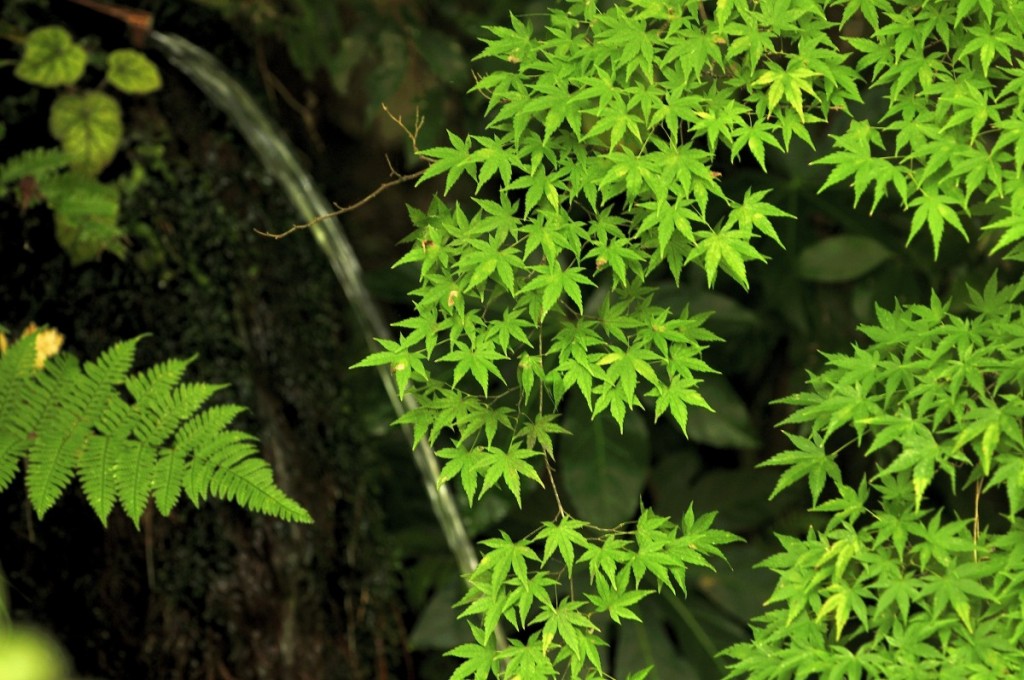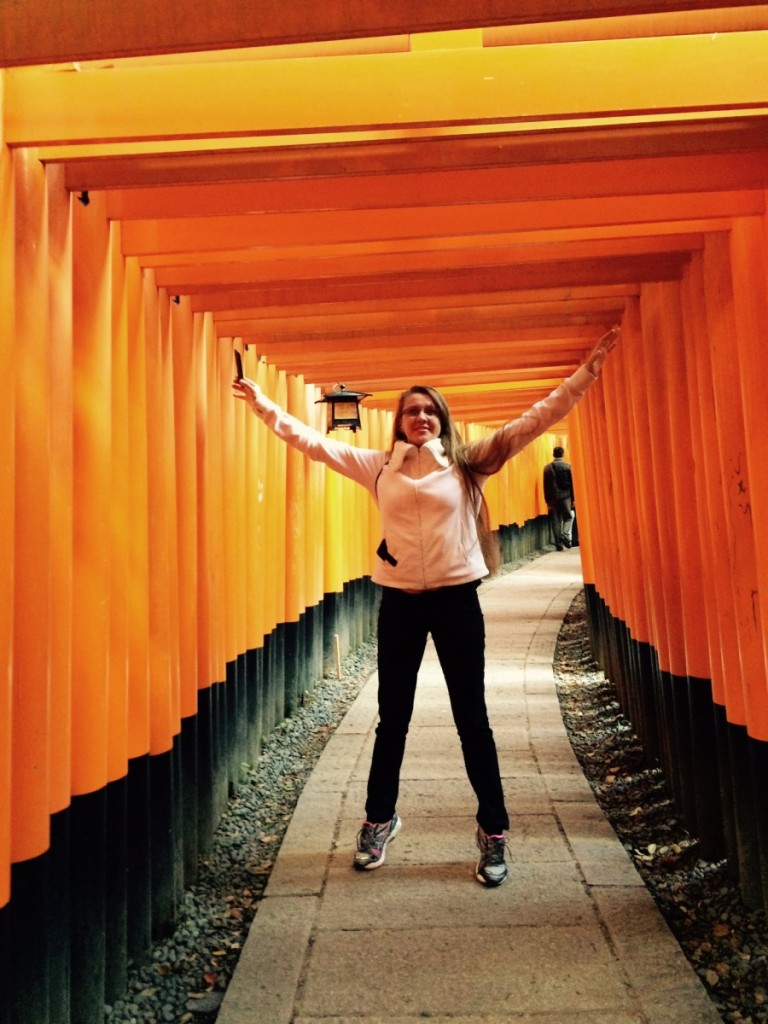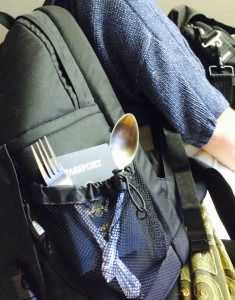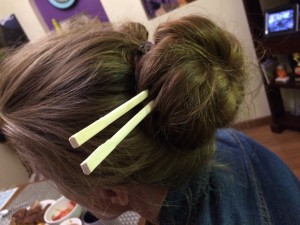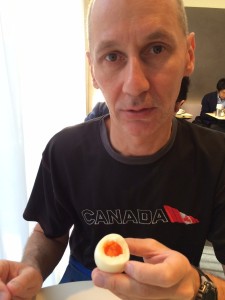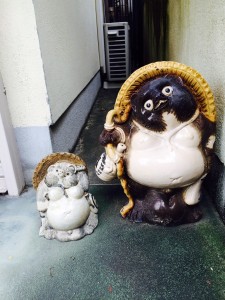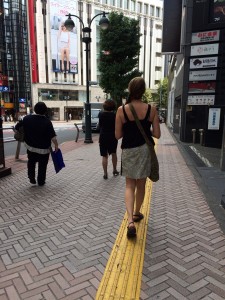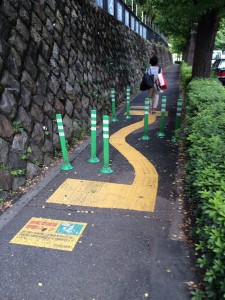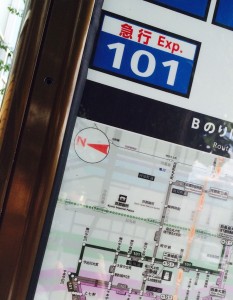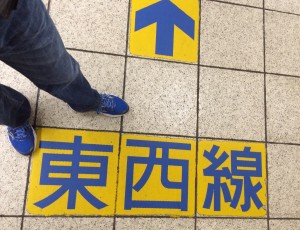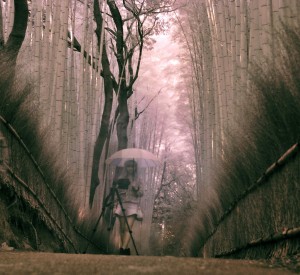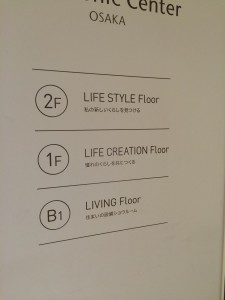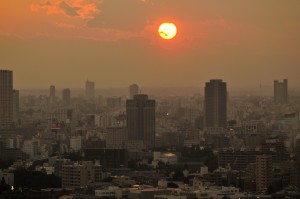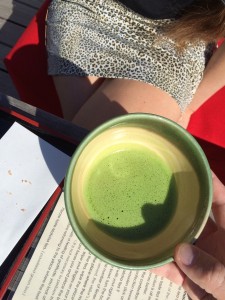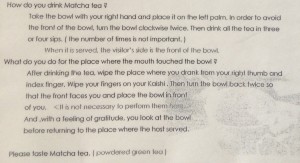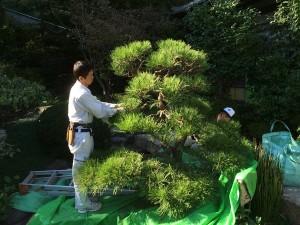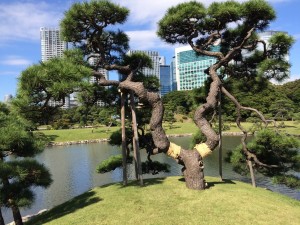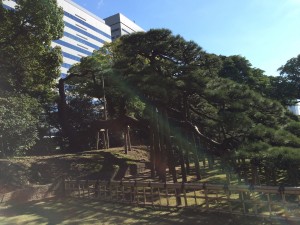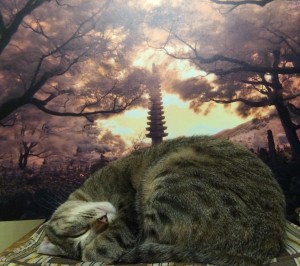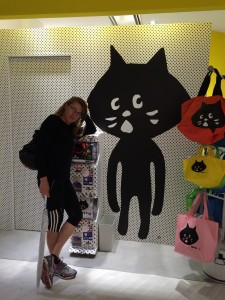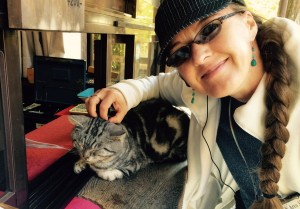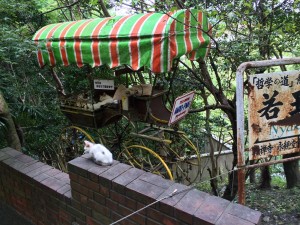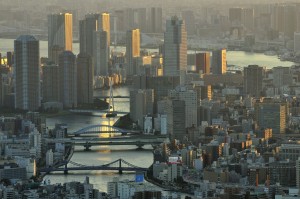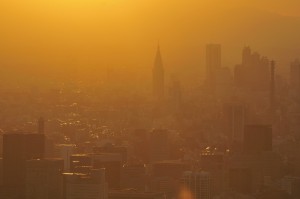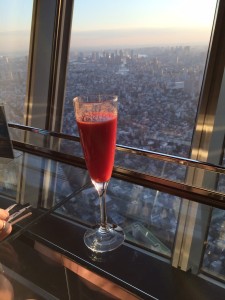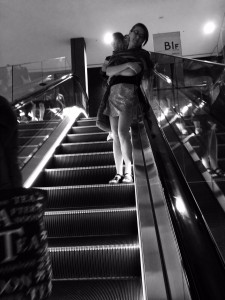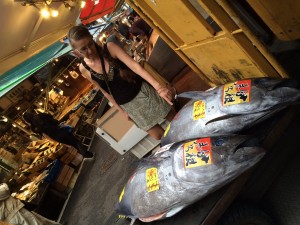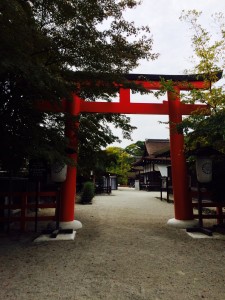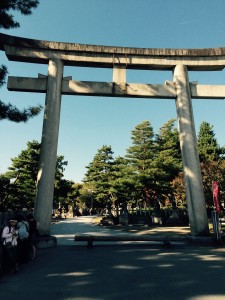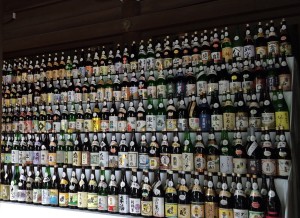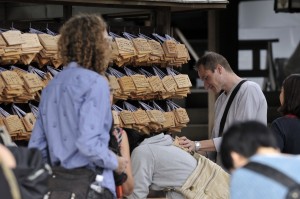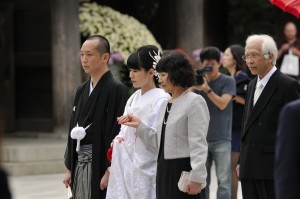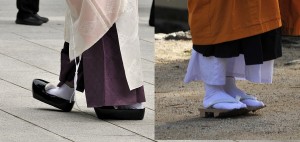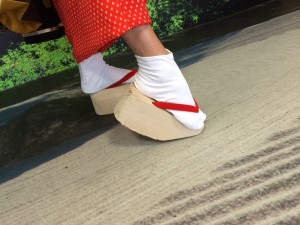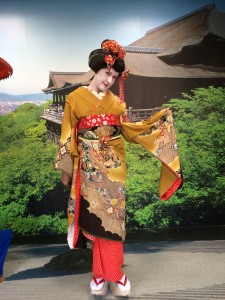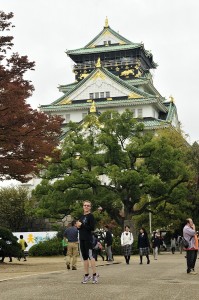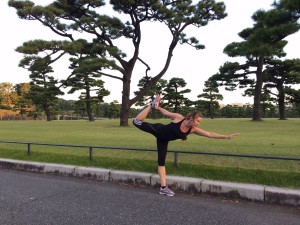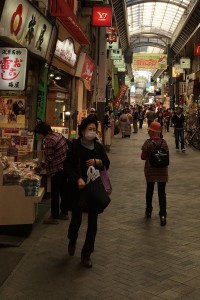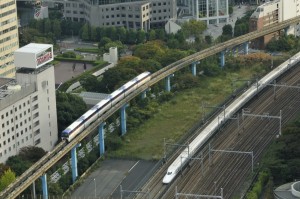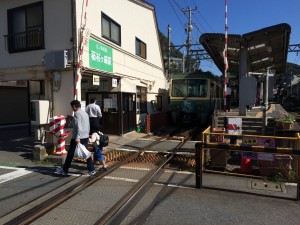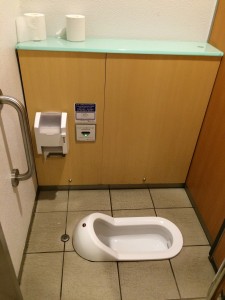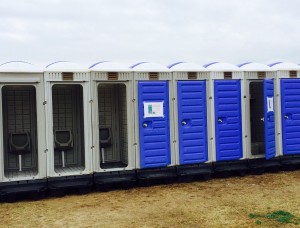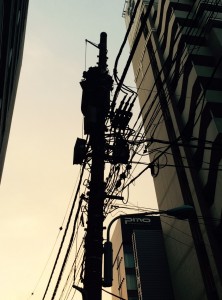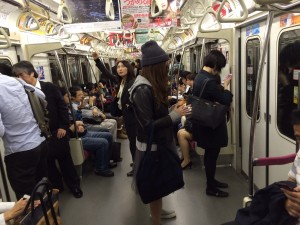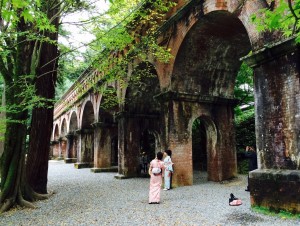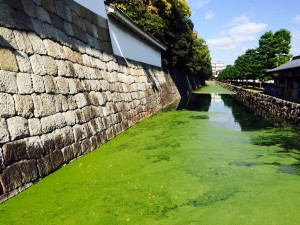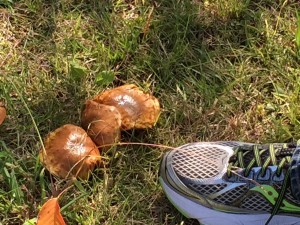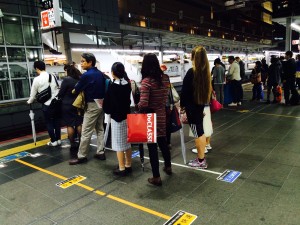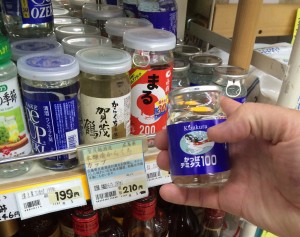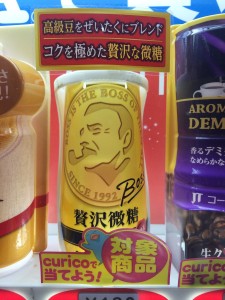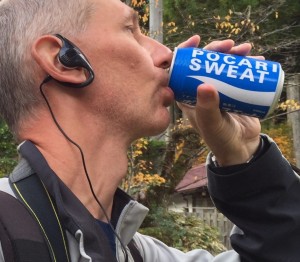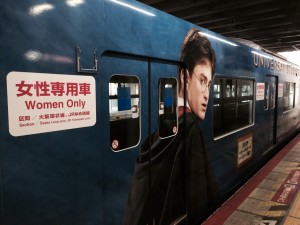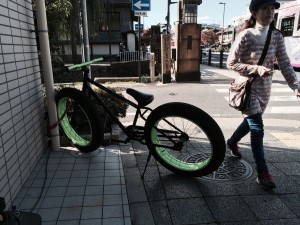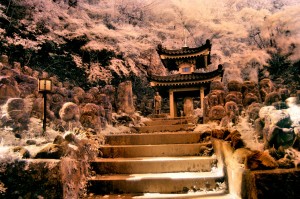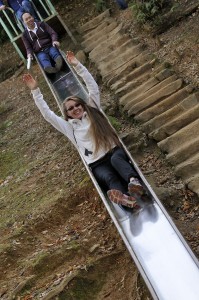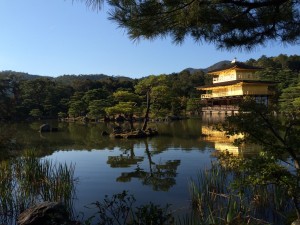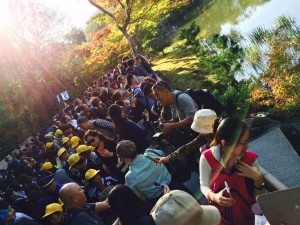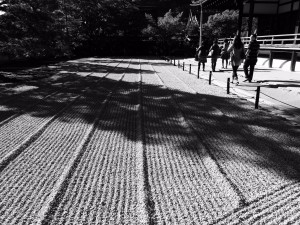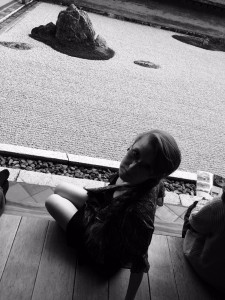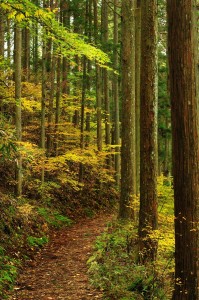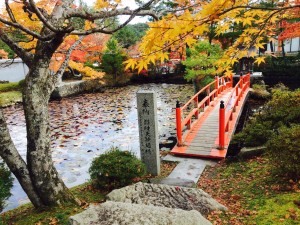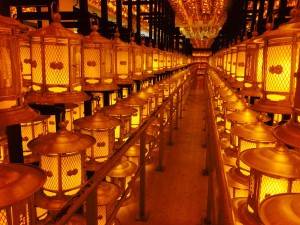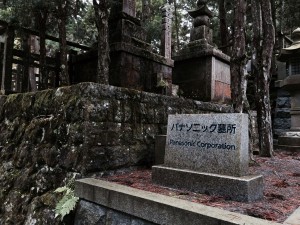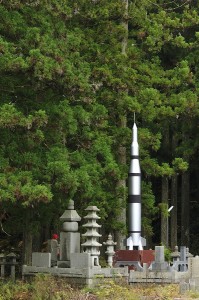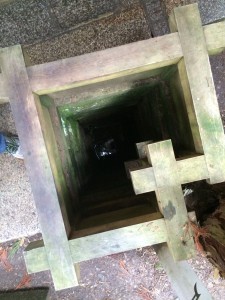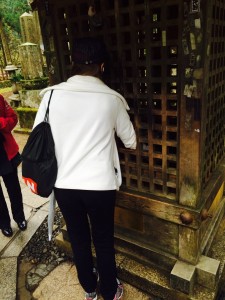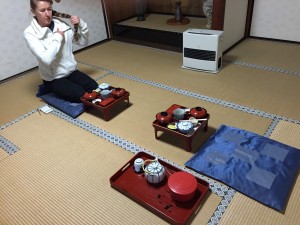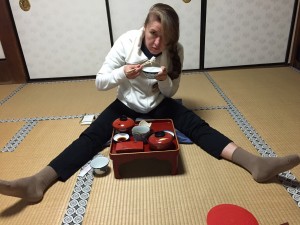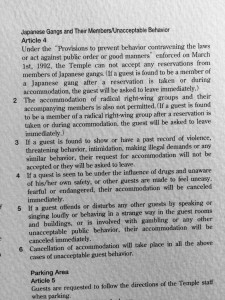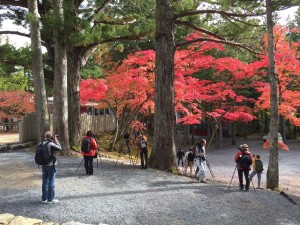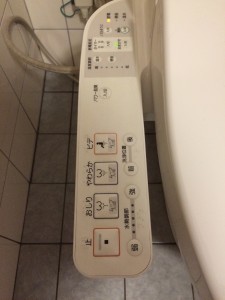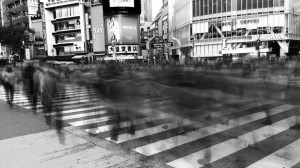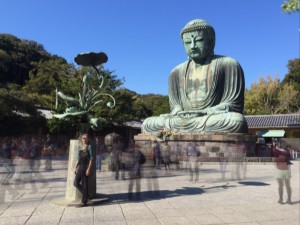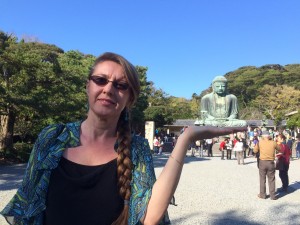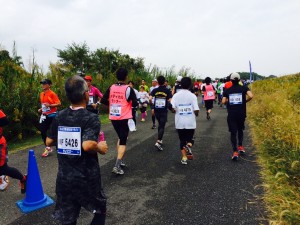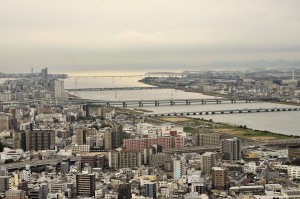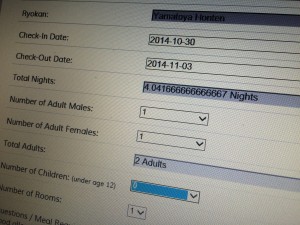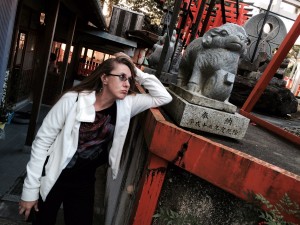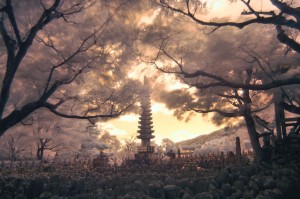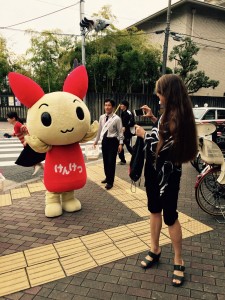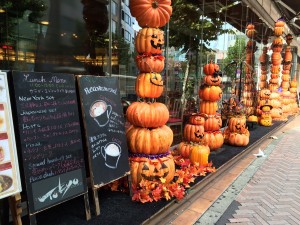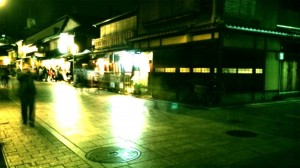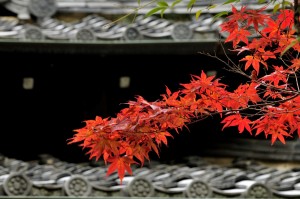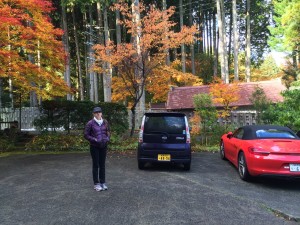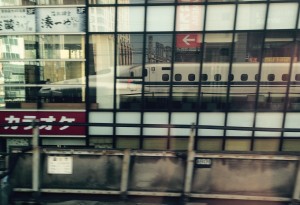Japan travel notes…
(Thanks to Inna and Dan for the help in translation!)
Japan has always seemed strange to us, if not of another planet, or at least in another parallel (or perpendicular?) Dimension. This perception was formed as literature and cinema, internet with YouTube, as well as communication with Japanese.
In some ways, our expectations were met, in some – not really, some stereotypes have been destroyed, some, on the contrary, amplified, there were also new.
As a result, we really liked this trip, and we want to come back. And there are things to come back for – in Tokyo alone we were not able to carry out at least half of the optimisticly planned adgenda. And Fuji-san left unclimbed.
Among other things, the preparation for the Japanese trip included a desperate need of improving the use of chopsticks. But in the end prevailed Japanese Buddhism and Russian Apathy (or vice versa?).
During preparation we unfortunately failed to accumulate any significant Japanese vocabulary – it’s been limited to standard “good morning / afternoon”, “thank you”, “sepuku”, “Kamikaze” and very few others; perhaps hoping that our smartphones and all-knowing Internet will save the day. But, immediately after boarding the plane our vocabulary was significantly expanded: +akawain, and when it’s gone, +shirowain.
If you were too lazy to google, the first one is a red wine, and the second – white wine. In Japanese.
Fast forward, I could say that the existing vocabulary in addition to English was just enough to survive.
Blond stewardess happened to be from Norway. When she discovered that we in turn came (originally) from Russia, for some reason began to pour us a double portion of akawain. Sincere arrigato.
First, Inna asked: “Why don’t you have T-shirts with the ‘Russia’?”. “Never came across one for some reason … But it’s an interesting idea – T-shirt with” Russia “on the front and with something like “Kurilyours” on the back, as a stress test of Japanese hospitality …”.
Second, Japanese yolk (chicken) egg somehow orange.
What “Hedgehog in the fog” is that? – provincially asked me.
-What kind of a hermaphrodite is that? – intelligently asked Ina.
Could be found in Japan literally on every corner, usually with a bottle, impressive manhood, and sometimes with breasts.
And it turns out to be a Tanuki – something like a raccoon dog, who became a hero of fairy tales, legends and other folklore, and symbolizes happiness and prosperity. Porcelain figurines of Tanuki exhibited in shops, hotels, bars, restaurants and other hospitable places and usually include a hat, a bottle of sake, a scroll with some texts, manhood that reaches the floor and some other items. Can be purchased at the gift shop. His appearance has evolved over the centuries. Breasts appeared not so long ago.
Yellow Brick Road
-Follow the yellow path and it will lead you to to the subway station, – told us the girl at the information desk at the main train station in Tokyo. Indeed, it did. Are these tracks were laid down specifically for stupid tourists? – we thought. These stripes and yellow tiles are everywhere in Japanese cities – inside buildings, platforms, sidewalks. Our suitcases (wheels) did not like them very much because of the relatively high bump profile. Google has revealed their secret – it’s the tactile tiles. In short, for the blind people. And yes, we saw some blind pedestrians confidently moving along these paths without any help from other people. Different tactile tiles for different situations – stripes for straight sidewalk passes and bumpy ones for intersections. Invented in Japan, first installed in Japan and covers almost all Japanese horizontal surface. In Kyoto tile is not very bright, probably for aesthetic reasons.
In our American suburb we also have something like this as it turn out – gray square pads at some intersections. And I always thought that they are for slippery winter conditions…
And in this photo – a fragment of the sidewalk in Tokyo alleys. There is a warning on the pavement for cyclists to warn pedestrians when passing and give them right of way. For cyclists to read this comics, and to ensure they don’t ride too fast (downhill), “slalom” poles installed. And for the blind do not shout when unexpectedly stumbled on these poles, the corresponding tactile path put down.
Japanese cartography …
. . . .
Japanese maps often drove us into complete stupor. That’s because they are very flexible with the concept of the North – it can point to any direction, like on this bus map.
Learning Japanese …
. . . .
Anybody would guess almost immediately that the character in the middle is a Pi Squared. But I have not yet figured out what kind of formula that is. Inna thinks that the last character is a man with a cane and a dog. Mystery…
Probably the most popular word in Japanese is “kudasai”. At least we heard it the most. So often that we have formed our own Japanese dialect at the end of the trip. Like “complete kudasai!”, “this kudasai costs 300 yen per head,” etc. In fact it means “please”.
.. .
picture not really related to above observation. Bamboo grove in Arashiyama, infrared:
Panasonic Center in Osaka …
. . . .
Inna became very interested in what is going on Life Creation Floor. I think she was slightly disappointed by what she saw.
Japan – Land of the Rising Sun …
However we have repeatedly seen the sun in Japan to go down as well. In general, like everywhere else.
Tea ceremony, Kyu Hamarikyu Garden, Tokyo …
. . . . .
Tea (Matcha, powdered green tea) is served with a small dessert and instructions (for Dummies). Dessert is consumed first, only then you can proceed to tea. For some reason, it is important to avoid contact with the front side of the cup. For that you have to rotate the cup twice clockwise. How to determine where is a front side at otherwise absolutely round cup? Easy – the host serves the cup with front side facing the guest. Once you finished the tea the place of lip contact should be wiped with the fingers and cup rotated back counterclockwise twice to return the front side to original direction. Whew…
Instruction:
One of the main attractions of the Tokyo Park Kyu Hamarikyu Garden – 300-years old pine. And this is no ordinary straight mast pine, but kind of creeping one. It creeps for 20-30 meters which is impressive. Garden guide explains how the samurai managed to maintain life in this magnificent tree. Each spring most new sprouts and all old needles pinched off, and that’s usually performed without using any tools, that is, with bare hands. I don’t know how many enthusiasts involved in the process, but it usually lasts two weeks. Also, every fall special rice straw skirts placed on trunks for collecting insects for subsequent cremation. So, if I would cared for pine in our garden as carefully, it would still be blessing us with it’s shadow, and would not just die 275 years before its 300th anniversary.
On the photo: the process of hand pinching dead needles on yet young pine …
And rice straw skirts are visible on this photo… For programmers, there is good optimization opportunity here – placing skirt on single trunk below.
Not a very good picture of 300-year old pine tree. It creeps from left to right, and a wooden fence placed under each branch.
-What’s that? – asked Misha looking at the phone screen.
-This is an American cat sleeping, leaning against the Japanese photo print.
-A-aah, I thought it was a photoshop …
Japanese cult of the cats, or the cult of Japanese cats.
They are everywhere, alive and porcelain, wooden, painted, and again alive; and cat figurines successfully compete with Tanuki statues. In Tokyo, there are even a few “feline” cafe, where for a nominal fee of 800 yen per hour (not including food) you can eat and play among the sleeping cats. Just a fluke prevented us to spend money in such a mediocre way – it was a Tuesday, and it was the only holiday in one of these cafes, we found on our way. I can see why the locals come in such a zoo – because of the tiny living space and, consequently, the impossibility of keeping pets. And we have in our house three of them …
Japanese merchandising
This cat lies directly on the cashier’s kiosk of one of the mausoleums of Koyasan. And, thus, does not pay any attention to the business being conducted around him. Buddhism.
Entrance to the tea room. In the cart relaxes a brood of cats, and one in the foreground seems to have fallen out of the nest.
The most notable attraction Tokyo – Tokyo Sky Tree, Tokyo Ostankino Tower, 634 meters tall already. It has two viewing platforms at altitudes of 340 and 450 meters. It captures the spirit, I’ve never been in such a tall building.
View of the Tokyo bridges with height of 340 meters:
The tourist’s day in Tokyo this time of year is short, the sun sets at about 4:45. Another phot from the top of Tokyo Sky Tree.
We chose to wait for the Tokyo Sky Tree sunset at a cafe. To brave the wait, Inna got espresso, but I said that I do not want coffee, but rather really REALLY wanted the red drink advertised on seemingly every corner in this tower, for about $5.50. Brought a small glass. It was the most expensive tomato juice I ever saw in my life. Peruvian, by the way.
Then he found the details of this little affair. Japanese-American researchers found wild tomatoes in the vicinity of Machu Pichu, for 50 generations have improved their breed, and created a new variety which was named Inca Red. And now they run small, exclusive batches of it that they sell for exorbiant prices in exclusive places. Juice is juice, from my point of view.
I think I know which half of the Sino-American researchers spent 50 years breeding the tomatoes, and which half spent the time on marketing.
Short time lapse of Tokyo darkening from the tower:
After a week traveling we learned to automatically stand on the escalator on the left, and to pass on the right. A gap in the pattern occurred in Osaka, where all the people for some reason did the opposite.
Tsukiji Market, Tokyo
Local Central Market. In the main part – the fish and other seafood, in another various other food and goods. For visitors, the market opens at 9 am, but you can sign up to attend an early auction for the sale of freshly caught tuna. You have to sign up at 4am, and they only allow 120 visitors.
This place has a sort of Brownian traffic, in which scurry vendors at high speed here and there on something that we have described as “ninja-mobile” – a hybrid of a barrel, a cart, and a gasoline or electric motor.
Despite the huge number of all kinds of marine life, the smell of not exactly fresh fish is blissfully absent.
A short clip with traffic controller on the market:
Japanese religion
. . . .
In Japan, the two major religions – Buddhism and Shinto. The second is much older, and deifies natural forces and phenomena. Both coexist peacefully, and very often Shinto shrines and sanctuaries can be found in Buddhist temples. From my amateur point of view all references to ghosts and other supernatural in films of Studio Ghibli are precisely the influence of Shinto.
A Shinto shrine is distinguished by the presence of several entrances to the territory. Each entry denotes the characteristic, usually huge gates (in a frame). They can be made of wood, painted in red or bright orange colors, or can be made of stone. There is always a place where you need to wash your hands, and in some cases rinse your mouth.
Shinto shrine gate:
In Buddhist temples there are always places that constantly kept a fire to burn incense.
A typical ritual in Shinto shrine: throw a coin in a box for donations, ring the bell by pulling a thick rope hanging from above, double bow with folded palms, twice clap your hands (likely to attract the attention of spirits), think about something eternal and very-very important for a few seconds, and bow once again. That’s it – you can go. The most important thing is – money upfront :).
Shinto shrine is a place where Japanese sake producers are asking the gods for the successful process. Shrines in response asking for free supply of sake for celebrations and rituals. Therefore, the walls of some sanctuaries literally lined with barrels and bottles of sake. That, I think, is a proper kind of religion …
Also, in Shinto Shrine you can buy a special wooden board or cardboard (cheaper), write a wish and hang it on a special wall for further wish fulfillment. We saw some wishes in Russian and Kyrgyz.
“The trip is a success!” -concluded Inna, finally witnessing firsthand the Japanese wedding. Japanese marry in Shinto shrines generally, and go for eternal meditation to Buddhist temples.
All more or less high towers are also venues for weddings. Probably non-traditional, meaning modern, meaning non-religious.
Buddhist monks and Shinto priests get shoes from different designers. First put on wooden slates, for further inconvenience equipped with two cross rails on the sole, and the second – a huge black galoshes of strange shape and made of incomprehensible material.
Follow up about Japanese shoes designers. Women’s Department, pure wood.
Forward lean is not recommended because you can fall, very inelegantly. Therefore, strides are very short, forming a specific gait, and it’s impossible to escape from samurai in these boots :). Probably to also exclude possibility of catching a real samurai off-guard, bells embedded in front inclined part of these shoes.
Japanese designers, women’s department, continued. This is a typical Maiko outfit (Geisha apprentice), in the Kyoto tradition. I was just a moment ago advised that Maiko isn’t just the apprentice, but also a pre-requisite of a Geisha.
Osaka Castle was once a stronghold of anti-samurai resistance in Japan. The castle now serves as a museum, pretty good and fairly large, but covering only two-three years of Japanese history preceding the unification of Japan in a single state. On all seven floors in different variants repeated history of that confrontation, and it’s summary can be expressed in two words – everybody died.
Health of the nation and the Japanese punctuality …
Running trail around the Imperial Palace in Tokyo is exactly 5 km, with drinking fountains, locker rooms, luggage storage and … showers. What is most surprising, 2 laps add up exactly 10 km.
Health of the Nation – 2
From the day one we were wondering: are the Japanese, that wear masks, are afraid of contracting some disease, or already ill and thus don’t want to infect others? Finally got an answer – both.
You have to have a lot of patience to walk the whole day in the mask. Once we’ve noticed a car, whose driver was wearing a mask, except there was no one else inside. Either he was afraid to infect his car, or to get infected from it, or couldn’t live without a mask anymore :).
Japan – a train enthusiasts paradise. In two weeks stay we rode on at least a dozen different types of trains from street car type with old plush seats, to speedy Shinkansens.
Thus, advanced technologies perfectly coexist with relatively old in Japan.
Photo: shinkansen meets monorail in Tokyo.
Train to Chattanooga, or the mix of futuristic and ancient traditions again
. . .
Asked at the ticket office of the Japanese Railways (Japan Rail) about next Kamakura train departure, and how to get to the platform. “Wait a second,” said the clerk and pressed a couple of buttons. There was a very long-forgotten sound, and a minute later we got hands on a printout of the matrix printer.
By the way, the traditional Japanese plumbing piece. Only (maybe) by the location of toilet paper user can guess which side to approach it from.
Observation from marathon. Unlike US unisex ones, Japanese portable toilets are divided into male and female. Women’s – pink and men, respectively, blue. But men again divided into two types – urinals and “traditional”. For those with urinals doors are absent as a class. Similarly, some train cars have cabins with urinals that don’t have doors. Tradition, I guess. Inna suggests that they have something to be proud of.
Japanese Wi-Fi …
Despite the modernism and technology, Japan isn’t exactly friendly to Wi-Fi, for some strange reason. The vast majority of hotels warns in advance that internet access is wired only (Ethernet), so if you came with just iPad, tough luck. But the majority of even relatively ancient laptops can work as hotspots, you just need to google how. In makbooks it’s in the operating system settings (Yosemite), and also works through Windows command line.
In some cities you can connect to free Wi-Fi at every bus stop, but to gain access you need to send and receive registration email, which is very difficult without internet access – weird rule. There is some free Wi-Fi access with tourist train pass but we did not bother to explore it – we had enough Internet on our phones.
Japanese electricity …
100 Volt outlets for flat contacts (American style), but without ground. Peru, by the way, was the same at the Iquitos airport. So if you have a device that has a ground pin, the adapter is required.
Most hotels in Osaka, when we tryed to book a room for two, refused on the pretext that the number of people exceeds the limit. That is, rooms are for singles (capsules?).
Inna saw a woman with bare shoulders and was delighted: “Oh! There are three of us in Tokyo now … “. Despite the warm weather and high humidity locals wear long-sleeved clothing, and sweater, jacket, or even a parka. Even those who are jogging along the streets not an exception. You can easily recognize a tourist from afar by a t-shirt with short sleeves.
Lots of Japanese women wear traditional kimono in Kyoto. Cute.
From my point of view, the most interesting feature of the Nijo Castle in Kyoto is the so-called singing floors. When walking on these floors made of Japanese cedar, they sound like nightingale. It is claimed that it was built specifically to warn residents about sneaking villains at night. But I (as a recreational builder) think that they just failed to build the floors properly (so that they do not squeak) and then came up with a creative excuse.
“I told you it smells like mushrooms here”, said Inna after discovering a meadow with clean yellow boletus in the castle gardens (we found them in other gardens too, BTW). Probably, the Japanese do not eat mushrooms. Otherwise they would not be stuck like that for all to see.
Some time ago the Japanese decided to collectively grow. Or is it just a myth. But there is a result (oddly enough) – despite the neighbors warnings (who worked in Japan about 40 years ago), I didn’t feel like the tallest guy on streets. I don’t know how they did it (some say that the reason is the consumption of milk and meat), but I noticed that supermarkets sell a dozen different types of carrot juice.
It should be noted that despite the changed throughout many decades diet local population grow exclusively up. Almost all overweight people we’ve seen were American tourists.
.. .
On this picture (unrelated to what is written above) is a train line. Trains are marked with different colors – yellow and blue, and arrive alternately. On the yellow stripe should be patient line for the yellow train.
Despite the taller nation, the standards seem to have remained the same. Beds are comfortable, but short. Blankets are warm, bilayer and heavy in winter, but … short. This was the biggest inconvenience during the trip.
In one of the passages in the Kyoto Imperial Palace stays specially trained man in uniform. And he is trained in the identification of relatively tall tourists in the passing crowds and warning them about low profile in this passage.
Unexpectedly figured out how the system of discounts works at Kyoto grocery stores. Young man with a big roll of red stickers occasionally appears on the store floor, he walks through the aisles looking for products from the time of preparation of which has passed a certain time, and puts discount label on the product packaging. Several levels of discounts – 100, 200 yen or 50%. This man is followed by a small crowd of housewives who literally pull newly discounted products from his hands, while somehow managing not to lose their indifference, Buddhist style. I suspect the young person feels almost like a god :). Our Kyoto apartments had a full kitchen and we immediately started experimenting with local food :). First time in my life we’ve tried herring sushi. It was good.
The most popular drinks in Japan, according store stock – a lager beer and sake. I’m a lager beer fan and felt like in paradise. Sake is sold with different alcohol content (pure sake, 50% diluted sake (?)), starting from small 150-gram jars. Very convenient in situation when you just walk down the street, suddenly feel strong thirst, bought small jar, emptied it, went on.
Japan – vending machine paradise. You can buy anything, anywhere, always. Tried one for the first time and were really surprised – randomly chosen drink was hot. Later we learned how to identify the temperature of the drink in advance by certain label. There are also vending machines that sell beer. It’s still unclear to me whether there is an age limit in Japan on the sale of alcohol (legal age), and if so, how machine enforces it.
Saw this in vending machine and decided to try. Tastes like a slightly diluted lemonade. It remains a mystery who is this Pocari guy …
Japanese Finances
. . .
Japan isn’t exactly friendly to credit cards. Not at all. Many small stores do not accept traditional Visa and MasterCard, and require either cash or some special Japanese (probably debit) cards. So we had to withdraw from ATMs unusually large amounts of cash. And finding proper ATM is not very easy as well. The rule of thumb is – if there is not a single english word anywhere on machine, don’t even attempt to insert the card into it. “This ATM does not work with cards issued outside of Japan! Do not try to insert rejected card again” – sounds like a blatant threat :).
Train car in Osaka Loop Line. Under the protection of Harry Potter:
After a few days’ stay in Kyoto saw first locked bike.
Kyoto – one of the few cities that escaped the bombing during the WW2. Maybe because it’s a home of about 300 Buddhist temples and Shinto shrines. Shrines are usually free (probably making their living other ways), but the admission to the Buddhist temples is from 300 to 800 yen per person. Usually it worths it – beautiful Zen gardens, views… But cash disappears very quickly, ATMs are not very easy to find either.
Me and the Japanese macaque (left to right).

Monkey Park in Kyoto. About 150 monkeys roam freely through the park among the visitors. Three dont-s (for visitors):
– don’t show food to monkeys
– don’t touch them
– don’t look them in the eye.
Latter, along with white-toothed smile, is considered by monkeys a manifestation of aggression. So if you feel funny or friendly, don’t smile showing teeth.
The only cage is located at the top of the park. Only from this cage visitor can feed nuts to monkeys. Monkey is outside. Kind of inverse zoo…
Only after getting down on this slide have read that it’s designed for monkeys. Yeah, I thought it looks a little strange because not every tourist’s butt will fit in this slide.
Somehow we happened to get to one of the most famous Buddhist temples in Kyoto together with several busloads worth of Japanese schoolchildren. Left and right we heard “Herrou!” addressed to us, sometimes even in unison. It took us a while to realize that they just practice English pronunciation of “Hello” …
This is how point of shooting looked like:
But ten minutes later this place was empty again…
The next day we’ve met again with (another) group of schoolchildren. The most brave stepped forward: “Hello, I’m Japanese girl! I live in Japan!”. Inna decided to keep the conversation going: “Hi! Nice to meet you! I live in America. Are you from Kyoto?”. You can tell by the look in girl’s eyes that she spent all her vocabulary on the first sentence. Blinked twice, and without saying anything else she ran after her group.
Whether the Soviet border guards were Zen Buddhists, or Zen Buddhists are natural border guards. On the photo: control strips in the Japanese Buddhist garden.
Japanese rock gardens …
. . . .
Technology of building a rock garden is very simple – fine white gravel is spread on a flat horizontal surface, Zen border guards make control strips on it, plant stones and place Buddha somewhere near it to supervise these stones grow.
BTW the legend that you can see only certain number of stones from anywhere is just a legend. I counted.
I’m thinking about how to build something like this in our garden. To cut on lawn mowing.
One of the many hiking trails around Koyasan bears the name of Women’s Trail. Found no direct explanation for the name’s origins, but there was fact mentioned that until 1872 women were not allowed to appear in this holy village. So I assume that male Pilgrims went to the mausoleum of Kobo Daishi directly, and women had to go through the surrounding mountains and ravines, hence the name of the trail. Now everybody can hikes the trail, but judging by the trail conditions not many people want to take this 5K hike. By the way, since about same 1872 monks were allowed to marry. Surely these two events are somehow related to each other.
There are several dozen Buddhist temples in Japanese Buddhist Mecca Koyasan. The business model of most of them is simple: monks take care of designated part of the Okunoin cemetery and the temple provides accommodation for cemetery tenants visitor descendants, pilgrims and other travelers like us. Accommodations are traditional Japanese style – tatami, shared (but there are more luxurious with en suite facilities) and Japanese bath. There is a Buddhist vegetarian breakfast, delicious by the way. You can also sign up for dinner and I highly recommend it because life in this town dies out almost completely around 5-6 pm (when sun sets). If someone did not have time to dine – tough luck.
Kobo Daishi Mausoleum, the founder of Shingon Buddhist sect is the epicenter of the Okunoin cemetery in Koyasan. They don’t say “died” about Daishi, but “went into eternal meditation”. The more important the person was, the closer his grave is to the mausoleum. It is claimed that this is the largest cemetery in Japan, more than 200 thousand moss-covered ancient tombs, among the thousand-year-old Japanese cedars (cemetery’s age is 1,200 years). The perfect place to reflect on the eternity, that is.
Not far from the mausoleum were surprised by an obelisk with the English inscription. Somehow we didn’t know that Panasonic Corporation has also gone into eternal meditation!
There is also an unusual obelisk at the cemetery in a shape of a space rocket. I don’t know who and why needed such a strange memorial, but story says that the cemetery administration delayed permission for its construction until designers promised to build it according the Buddhist traditions in several stages. In about 200 years it will also covered with lots of moss and be a little more photogenic.
There is a magic well just before the last section of the 2K walk to the Mausoleum of Kobo Daishi through the largest cemetery in Japan. Two theories exist about its functionality. First – if you are able to see your own reflection at the bottom of this well, then you can expect a long life. Second theory – if you don’t see your reflection, then you’ll die in three years. Ouch, I forgot to warn – if you are afraid not see your reflection, don’t look at this picture.
(Sugatami-no-ido, the Well of Reflections)
Miroku-ishi – Bodhisattva Stone
Close to the magic well there is a small box with a hole. If you stick your hand in the hole, you can grab and try to pick up a polished black stone lying in a box. Like with a well, there is a magic property in that stone – it feels heavy to bad people and light to good ones. Smart monks made this stone in the form of a truncated cone, and in my theory, person characteristic depends on how he grabs that stone. I tried to grab the top of the widest part, and therefore proved to be a bad person. Inna managed to not only stick her hand under the stone, but to find something to press her elbow against and therefore proved to be not only very smart, but also very good person.
There are several theories about the origin of this stone, from a meteorite to the Chinese Buddhist smuggled object.
Again, accommodations in the Koyasan temple is traditional Japanese style. Which primarily means the absence of any central heating. Our room had a mysterious device manufactured by Sanyo, which appearance suggested some heating properties. However, examining hieroglyphs on it, connecting it to the electric outlet and randomly pressing all buttons did not lead to the heat production. Fortunately most knowledgeable (in the sense of the English language) monk happened to walk past our room and he found the right word in his vocabulary – “wait”, which we interpreted as “don’t worry guys, you just have to wait a bit, the device will start working and happiness will come upon us”. And indeed, after about 3 minutes white box produces a grunt and started to give some hot air with suspicious and very characteristic odor. We became a little alerted … A deeper inspection of the device showed that the heat source is the process of burning banal kerosene, and the design of the device for some reason, didn’t involve the exhaust – products of burning were also involved in heating of the room. We shut it down for good just in case :).
On the photo – Buddhist tourist’s breakfast. In the background – the mysterious heater.
I don’t know why but to sit in the Japanese position for a prolonged time can’t even those tourists who regularly torture their body by all kinds of yoga. That’s so much easier …
Follow up about the Koyasan temple stay…
In a prominent place in the room there is booklet with rules of conduct. In particular, you can’t bring food without permission of the administration. Also there is a separate criminal/political chapter, the essence of which is as follows: the members of the Japanese criminal gangs or right-radical organizations, as well as guests with history of violence can’t stay in the temple, and if they do they will be kicked out upon discovery. In short, translating into modern realities, Communist Party members – welcome, but only if they don’t beat their spouses every morning, and the Right Sector member – go away, even if he walks old ladies across the street on a regular basis.
In early November Koyasan is not only a Buddhist Mecca. Like bees to honey, photographers of all skills flock here from everywhere, and hunt for each red or yellow leaf.
There are special slippers to visit the Buddhist restroom, courtesy placed near the entrance. Buddhist toilet like in the rest of Japan is all-wheel drive, turbo, and with vertical take-off. In this particular instance the most interesting are hieroglyphs in the shape of number 3, with some broom at its side.
One of the most famous intersections in Tokyo – Shibuya Crossing. But apparently, it’s not a perfect season – the crowd is relatively small. And it’s probably better to find some higher spot to take a photo…
Big Buddha of Kamakura…
Demonstration of the principle of “those who understood life are in no hurry.” 30 seconds of meditation.
Big Buddha of Kamakura and the Theory of Relativity
Osaka Yodogawa Citizen City Marathon. The longest marathon in my life. Longest by the name, I mean. Fahrenheit 70+ degrees with almost 100% humidity. But more than half of marathoners ran in long tight pants (with shorts over), in two shirts and some in gloves. Mysterious physiology. I was the only foreigner of 6300 runners judging by the list of participants.
In the photo – Yodo River (Yodo-gawa), along which runs marathon.
Japan isn’t exactly very friendly with the Internet. To register for the marathon, I had to creatively manipulate three browsers and two translators. The results of the marathon were published a month later and I couldn’t find my true placement (by net time). Not like I really upset by that :). But the marathon was organized almost perfectly.
Photo: You can easily guess how they got 4.041(6) nights from October 30 to November 3, but then it is not clear how by adding 1 adult male and one adult female they’ve got exactly 2 adults.
2015 – Year of the Sheep.
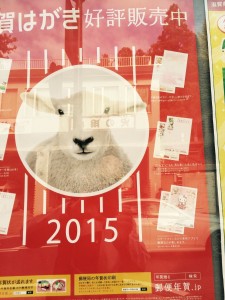
. . . .
Zodiac complex in one of the Kyoto shrines. Tourists are offered to find their sign (on the eastern calendar). Sure, easy. Here she is, The Sheep.
The grounds of a Buddhist temple. Is a picturesque ancient cemetery. Kyoto infrared.
Walking through the streets of Tokyo and accidentally stumbled upon “The Central Committee of the Japanese Communist Party.” Lenin will live forever…
Japanese Halloween
. . .
Here’s a Halloween that I like – pumpkins, candies, a little of ghosts and Pokemons. And no zombies or undead.
Observation. Tokyo is a city completely taken by iPhones. In other cities are more or less equally.
Gion – the historic district of Kyoto, which is dominated by the architecture of the Edo period. It’s known also by the fact that there you can see authentic Japanese geisha in the evening. We were very lucky, and for about ten seconds we saw a geisha, running from one building to another accompanied by a guard. About a dozen of foreign tourists with cameras and camcorders hurried after her.
When walking in about 30 minutes in the opposite direction we found that the crowd of tourists is still standing in the same place waiting for her return.
For those ten seconds the only thing I’ve noticed is that a geisha was rather tall.
At some point I thought that we won’t be able to see a single american car in almost two weeks we stayed in Japan. But in the end, we saw as much as two – Ford and Jeep. And one Renault. And one Alfa Romeo. Vast majority of cars – Japanese and, paradoxically, German. That is, BMWs, Mercedeses and Audis are present on roads in Japan in incredible amounts.
Only in Koyasan we found a Subaru which was similar to the ones that roam the American roads – Impreza. The rest were some specific Japanese varieties. For example, in this particular case near Buddhist temple hotel I was photographing not red and golden autumn, not a Porsche, and not even my wife, but Subaru:
The last day was dedicated to the Japanese Transportation and souvenir shopping. List of transport taken that day:
– Bus
– Cable car
– train
– transfer to another train to Osaka
– Osaka subway
– Shinkansen (bullet train) to Tokyo
– an express train to the airport
The trip took about 6 hours. And then another two flights.
This is my favorite photo from this trip for some reason. Maybe because it’s a selfie. I am in the 5th or 6th window of the train, riding through Tokyo for the last time.
На втором поезде ехали в толпе с теми, кто добирался в Осаку к 9-ти утра на работу. Поразило полное отсутствие каких-либо разговоров в вагоне. Если бы не стук колес и не объявления остановок, то была бы мертвая тишина.
On the second train we were traveling to the Osaka with commuting crowd. Struck by the complete absence of any conversations in the train car. If it were not for the sound of wheels and stop announcements, there would be dead silence.
Japanese souvenirs …
Did most of souvenir shopping at the airport before the return flight. Japanese chocolate was offered to us packed in boxes with ice.
In another box with Japanese sweets that we opened at home was an unexpected surprise – a certain kind of cookies were wrapped with small packets, on which in five languages was written a warning that it’s not a food. It turned out that after opening the box packets began to produce heat and thus warmed cookies. Sort of hand warmers in application to the confectionary. Creative.
We are recognized in airplanes…
On return flight from Tokyo we’ve met the same Norwegian flight attendant as on the way to Tokyo. As to old friends, she offered to leave the box with akawain with us, to save on running back and forth.
And here are your favorite photos from the trip (300+):
Some of the resources used in planning …
Very useful site:
http://www.japan-guide.com
In particular, information about the train pass:
http://www.japan-guide.com/e/e2361.html
Information about Koyasan:
http://www.koya.org/english/viewpoint_06.html
And google and tripadvisor, of course …
